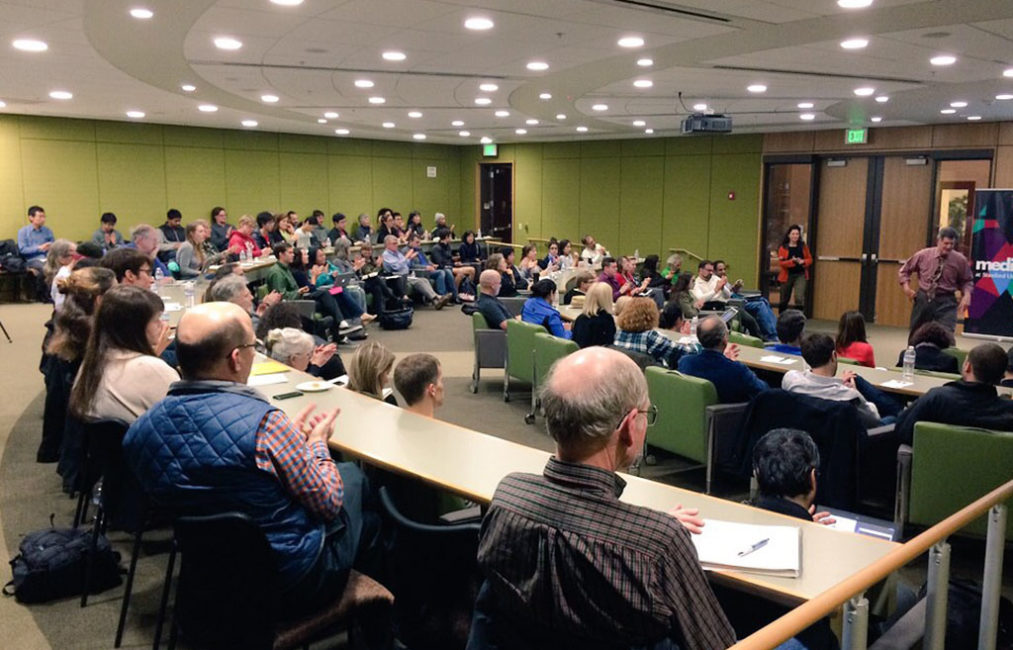Watch Presentations from The Science Storytelling & the Power of Participation Seminar

How do stories exert influence? What insights from mathematical sociology and behavioral science can be considered when crafting a story to engage an audience? On March 2nd, Damon Centola and Kendall Haven explored new answers to these and other questions about science storytelling during the mediaX seminar on Science Storytelling and the Power of Participation.
In this talk, Haven explains four major concepts from his “Story Influence Theory” that can be applied to actual corporate communication challenges: engagement, attention, transportation, relevance and influence. Haven also discusses:
• A brief overview of his 2007 – 2012 foundational work
• Recent experiments to link internal neural “Make Sense” processing to specific story elements and to key measures of engagement
• Examples of the application of Haven’s “Story Influence Theory” to actual corporate communication challenges
Watch Kendall’s Presentation: Your Brain on Story
“A story is not just content. It is the way you organize the content. A story is a way of thinking and planning.” – Kendall Haven
CLICK HERE to View the SLIDES from Kendall’s Presentation
“The slides in this file are all copyright protected by Kendall Haven. You are encouraged to use and to share the information provided, but please do not duplicate, copy, transmit, print, or otherwise share these specific images without Kendall Haven’s expressed permission.”
Audio ONLY of Kendall’s Presentation
In his talk, Damon Centola discusses the impact of network “topology” – the graph-theoretic structure of social ties in a network – and “homophily” – the similarity or differences between connected members of a population – on behavior change in large online populations. His research results show how these factors can directly alter behaviors at both the individual and collective level.
Watch Damon’s Presentation: The Spontaneous Emergence of Collective Behavior
“’How much critical mass is needed for something to become popular?’ This is the question we tend to ask – and it’s wrong. The question we need to ask is: How are people connected to one another when something becomes popular?” – Damon Centola
Audio ONLY of Damon’s Presentation
Watch The Stream of the Event